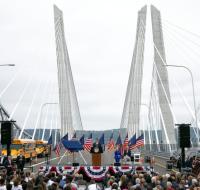Arizona Department of Transportation has now entered into negotiations with the apparent preferred developer, Kiewit-Fann Joint Venture, to design, construct, operate and maintain improvements to Interstate 17 (I-17). Design and construction is anticipated to begin next year, pending agreement of a final contract. Construction is expected to take approximately three years.
Key members of the Kiewit-Fann Joint Venture include Kiewit Infrastructure West, Fann Contracting, Kiewit Engineering Group, DBI Services, Consor Engineers doing business as Apex Design, TY Lin International, Lee Engineering, Terracon Consultants Inc, Wheat Design Group, Y2K Engineering and Pinyon Environmental.
The project will improve 37km of I-17, including 24km of road widening, two bridge replacements, a deck replacement and 10 bridge widenings. The project also includes flex lanes, which will operate as a separate, two-lane road carrying one direction of traffic at a time depending on the greatest need along a steep, winding section.
Three finalists were selected earlier this year to advance through the selection process. All three finalists were encouraged to use innovation and develop alternative concepts to deliver the best possible design, construction, operation and maintenance strategy for the project.
Governor Doug Ducey said: “Arizonans are excited to see major improvements to Interstate 17 coming soon, and today’s news is an important step forward. I-17 is a critical link to northern Arizona communities and a vital economic corridor. Expanding this section of I-17 will reduce congestion, improve traffic flow and strengthen public safety. Millions of Arizonans will benefit from I-17’s improved connectivity and reliability when this project is completed.”
The final cost will be determined after contract negotiations. In February, Ducey announced US$40 million in funding for the I-17 project. Additional project funding sources include US$130 million of state highway funds, a US$90 million Infrastructure for Rebuilding America grant; US$50 million from the Maricopa Association of Governments for the Maricopa County portion of the project; and US$52.3 million from federal aid with matching state highway funds.




